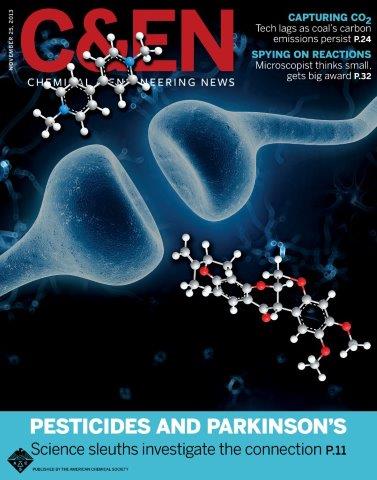FOR IMMEDIATE RELEASE
ACS News Service Weekly PressPac: December 04, 2013
Investigating the link between Parkinson’s and pesticides
"The Pesticide Connection"
Chemical & Engineering News
In a seemingly simple experiment, a scientist exposes rats to a certain pesticide over several days, and the rodents start showing symptoms remarkably similar to those seen in Parkinson’s patients. But the scientific search for the causes of the disease, which affects 7 million to 10 million people worldwide, is nowhere near simple. An article in Chemical & Engineering News, the weekly newsmagazine of the American Chemical Society, dives into the potential pesticide-Parkinson’s link.
Lauren K. Wolf, associate editor at C&EN, explains that the focus on pesticides as a potential culprit for inducing Parkinson’s can be traced back 30 years to an unexpected origin, the illicit drug market. In 1982, a handful of young people showed up at medical centers with symptoms of the disease. It turns out that chemistry-savvy criminals had been experimenting with a new designer, heroine-like drug containing a compound that breaks down into a powerful neurotoxin. And these patients had taken the drug. Researchers found out the compound’s neurotoxic derivative had also been developed as an herbicide in the 1970s. That was the tip-off.
The article notes that 30 years on, the evidence supporting a link between pesticides and Parkinson’s is mounting. At the same time, many people exposed to pesticides don’t develop the disease. Scientists are looking for the specific pesticides involved and for possible genetic explanations of what makes some people more susceptible than others. They have found at least two genetic mutations that can increase a pesticide-exposed person’s risk for Parkinson’s, discoveries that are leading to the next stage in their search to understand a complicated disease.


